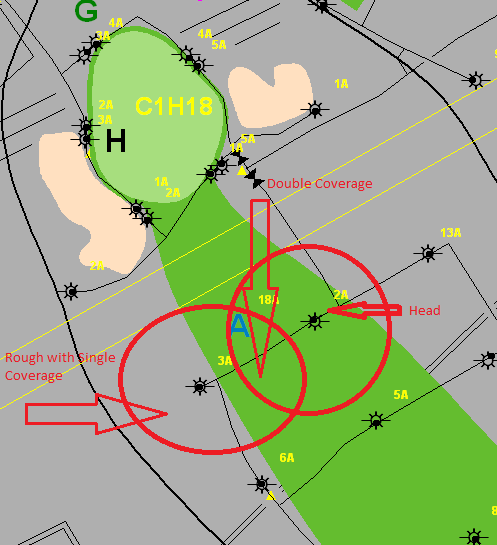 Golf Course Update
Golf Course UpdateThis time of year is typically dry for our area and we are currently experiencing the driest we have ever experienced. Some golf courses have been lucky receiving rain fall while others like ourselves have not. As the golf course becomes dry, we start to see how inefficient the irrigation system really is. Our system is designed as a two row system. A great example is Pinehurst #2 has a single row system right down the middle. Ours is 2 rows, one row is on the left of the fairway and the other is on the right half of the fairway. This system is great for watering the fairways and not so great when we need to water the rough. Our rough is comprised mainly of tall fescue and Kentucky bluegrass with other unwanted grasses such as bermuda. We are lucky enough to cultivate our fairways with the sand top-dressing over the winters and this has already accumulated 2.5 inches of sand. Water travels easy through sand because of the porous nature, while our roughs are comprised of clay and is tightly packed allowing no water to infiltrate. With our lack of irrigation, head to head coverage and traffic, we have a rough that looks the way that it does. Most new golf courses that are being built have gone to installing heads to just water the rough. Why would they do this? Well for a couple of reasons. First, we do not want to over-water the fairways creating soft conditions to compensate for the lack of water targeting the roughs. Second, the rough requires more water because of the nature of the grass and the soil structure. This is the challenge we are faced when we experience a drought here on the golf course.
Our bermuda control program around the greens is going very well with all of the rough replaced with sod. Our next mission is to repair some of the collars that also had bermuda growing in them as well with either a little seed or sod. The fairway bermuda suppression program is at work, turning the bermuda white. While we wish the herbicides will actually kill it, what is really happening is that we are shutting down the chlorophyll production in the plant and as the cold weather arrives, the bermuda does not have enough food reserves to survive the cold winter.
Last week, the team finished up aerifying approaches and top-dressing them. As customary to our greens aerification, the approaches were getting too soft and we needed to pull cores and fill with sand to keep them firm throughout the playing season. Of course because we are dry, open holes tend to dry out fast which is what we are seeing on a few approaches. In a short period they will heal up and we will be ready for the fall golfing season.
This time of year, we need a few weeks to take a few steps back so that we can continue to move forward creating consistent playing conditions.